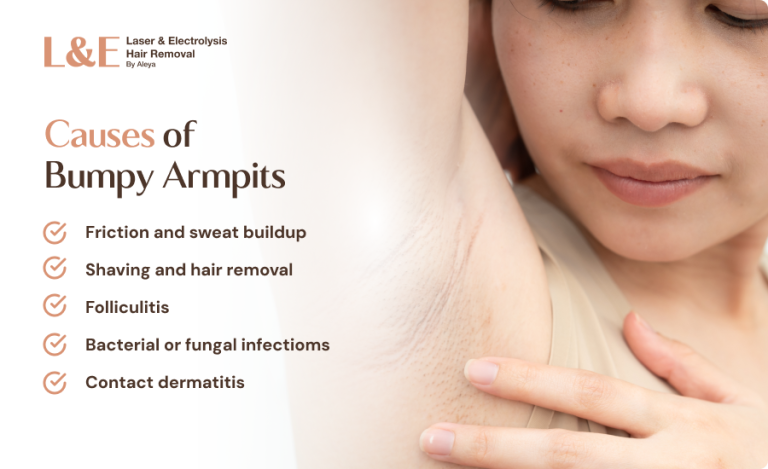Does Laser Hair Removal Cause Cancer? Debunking the Myth
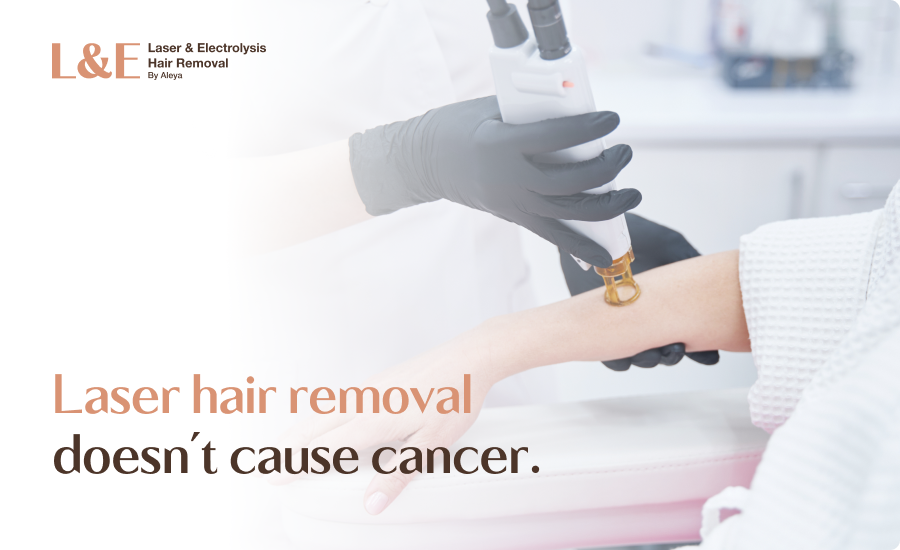
Does Laser Hair Removal Cause Cancer? Key Takeaways
- No, laser hair removal doesn’t cause cancer
- Laser hair removal uses low-energy light that can’t harm DNA or cells
- A trained laser specialist focuses the treatment solely on hair follicles, ensuring your skin and deeper tissues remain completely unharmed
Ever wondered if laser hair removal can cause cancer?
According to the Cancer Council, laser hair removal doesn’t cause cancer.
Laser hair removal uses low-energy light to target hair follicles without harming surrounding tissue. It doesn’t penetrate deeply enough to affect organs or increase cancer risk.
Still, it’s normal to have questions before starting treatment.
In this guide, we will:
- Go in-depth on why laser hair removal doesn’t cause cancer
- Explain the science behind laser hair removal and its safety regulations
- Introduce safe laser hair removal services at Laser by Aleya
Where Did Cancer Concern Come From Regarding Laser Hair Removal?
The cancer concern likely stems from confusion around the word radiation.
While harmful types like X-rays and UV rays can increase cancer risk, laser hair removal uses non-ionizing radiation, which doesn’t have enough energy to damage DNA or cells.
People might also worry because lasers produce heat and light, but the energy only targets pigment in hair follicles.
It doesn’t affect nearby skin or penetrate deeply enough to pose any real health risk.
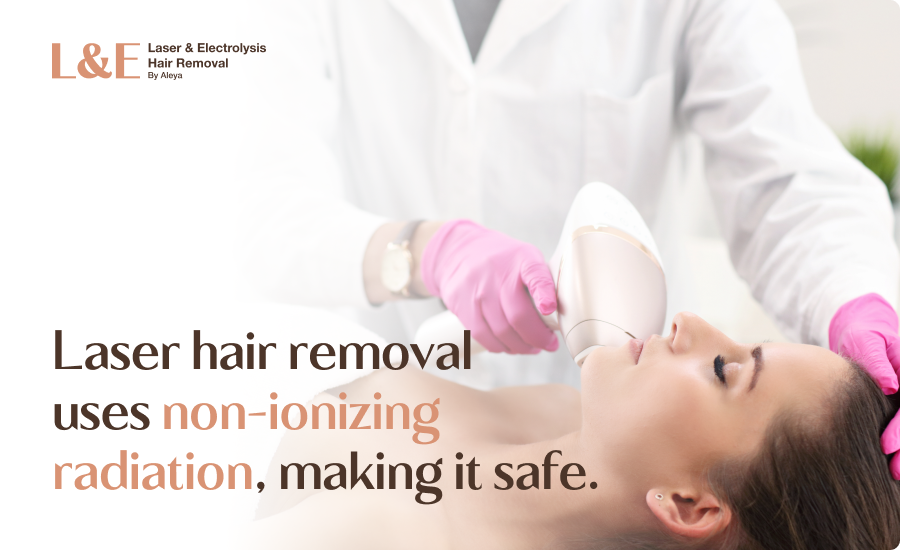
Can I Still Get Laser Hair Removal if I Have Early-Stage Skin Cancer?
No, you shouldn’t get laser hair removal treatments if you have early-stage skin cancer.
If you have early-stage skin cancer, or notice a spot that seems off, it’s best to check in with a dermatologist before starting laser hair removal.
While the treatment itself doesn’t cause cancer, using a laser on an affected area could irritate the skin or delay a proper diagnosis.
Since lasers target pigment, they might overlook or even mask warning signs like unusual moles or skin discoloration.
How Does Laser Hair Removal Work?
Laser hair removal is a cosmetic procedure that uses concentrated light to reduce unwanted hair.
- The laser emits a focused beam that is absorbed by melanin, the pigment in the hair.
- This light energy converts to heat, which damages the hair follicles beneath the skin and disrupts their ability to grow new hair.
- Since the laser specifically targets pigment in the hair and does not affect surrounding tissue, it poses minimal risk.
- It uses non-ionizing radiation, which doesn’t have enough energy to damage cells or alter DNA, making it safe for the skin.
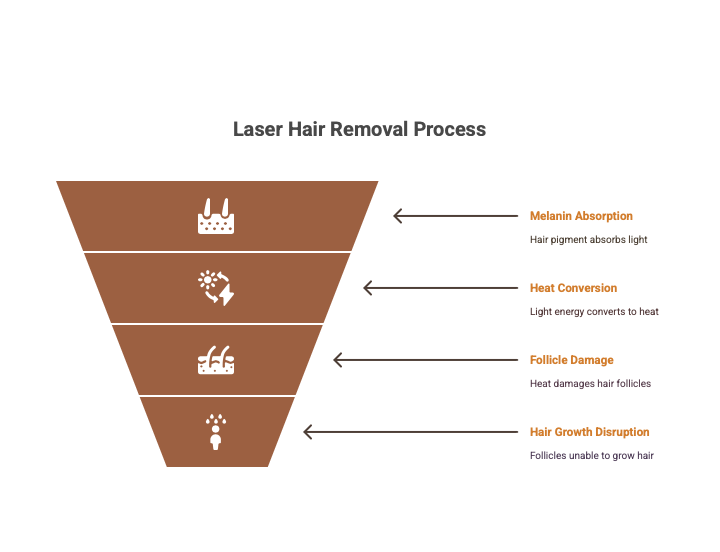
Non-Cancer-Related Side Effects of Laser Hair Removal
While there’s no solid evidence linking laser hair removal to cancer, it can come with a few other common side effects, including:
1. Redness and Irritation
It’s completely normal to have some redness or irritation right after treatment.
That’s just your skin reacting to the heat from the laser targeting the hair follicles.
2. Swelling
Minor swelling, especially in areas with thick hair like the bikini line or underarms, is common because the laser triggers a mild inflammatory response around the follicles.
3. Discomfort
Some people notice tingling, stinging, or slight discomfort during or after the session.
Sensitivity levels vary depending on the treatment area and individual pain tolerance.
4. Dryness or Flaking
The laser can temporarily dry out the skin, sometimes leading to mild flaking or peeling in the treated area.
Most people find their skin returns to normal within three to five days, especially with proper moisturizing and aftercare.
If the dryness persists, it’s a good idea to check in with your health provider.
5. Temporary Changes in Skin Color
In some cases, the treated skin might appear slightly darker or lighter.
These changes, known as hyperpigmentation or hypopigmentation, are usually temporary and more likely in people with darker complexions or recent sun exposure.
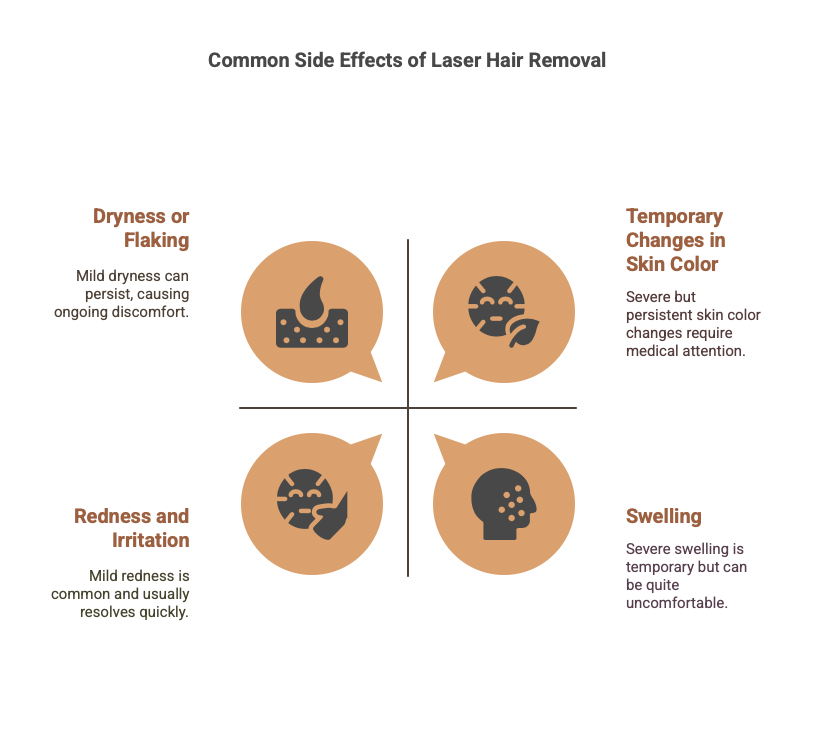
How To Minimize Side Effects After Laser Hair Removal
While laser hair removal doesn’t increase your risk of cancer, it’s still important to care for your skin properly after each session to minimize redness, irritation, or sensitivity.
Here’s how to keep discomfort to a minimum and help your skin recover like a pro:
1. Follow Pre-Treatment Advice
Avoid tanning, waxing, or plucking for at least four weeks before your appointment.
On the day of your session, make sure the area is clean and skip any products like lotions, deodorant, or perfume.
2. Use a Soothing, Non-Comedogenic Moisturizer
After your treatment, keep the skin hydrated with a light, fragrance-free moisturizer or pure aloe vera.
Steer clear of heavy creams that could block pores or cause further irritation.
3. Avoid Sun Exposure for at Least Seven Days
Stay out of direct sunlight for at least 48 hours.
If you need to be outside, protect the treated area with a broad-spectrum sunscreen of SPF 30 or higher.
4. Keep Cool and Avoid Friction
Skip hot showers, saunas, and tight-fitting clothes for a day or two. These can aggravate the skin and slow down healing.
5. Don’t Touch, Pick, or Scratch
It’s normal for the treated area to feel itchy, but resist the urge to scratch or pick.
Doing so can lead to irritation or even infection.
6. Apply a Cold Compress for Redness or Swelling
Gently apply a cold compress for 10 to 15 minutes after your session to soothe any redness or swelling.
7. Don’t Use Deodorant After Underarm Treatments
If your underarms were treated, skip deodorant or antiperspirant for at least 24–48 hours post-session.
Ingredients like aluminum, alcohol, and fragrance can trigger burning, itching, or inflammation on freshly lasered skin.
8. Skip the Scrubs
Give your skin a break from exfoliating right after your laser session.
That means no scrubbing, exfoliating gloves, or products with AHAs or BHAs for at least three to five days.
Your skin’s more sensitive than usual, and exfoliating too soon can make redness worse, slow down healing, or even cause tiny tears.
9. Hold Off on Tanning Products
Skip self-tanners and bronzing lotions for at least 10 to 14 days after your laser hair removal session.
These products can mess with the laser’s accuracy because of the added pigment, and they might leave you with burns, rashes, or bumps on freshly treated skin.
10. Follow Aftercare Instructions
Stick to your provider’s skin care recommendations.
Post-laser hair removal treatment tips include using any prescribed products, avoiding certain activities, and showing up for follow-up sessions to get the best results.
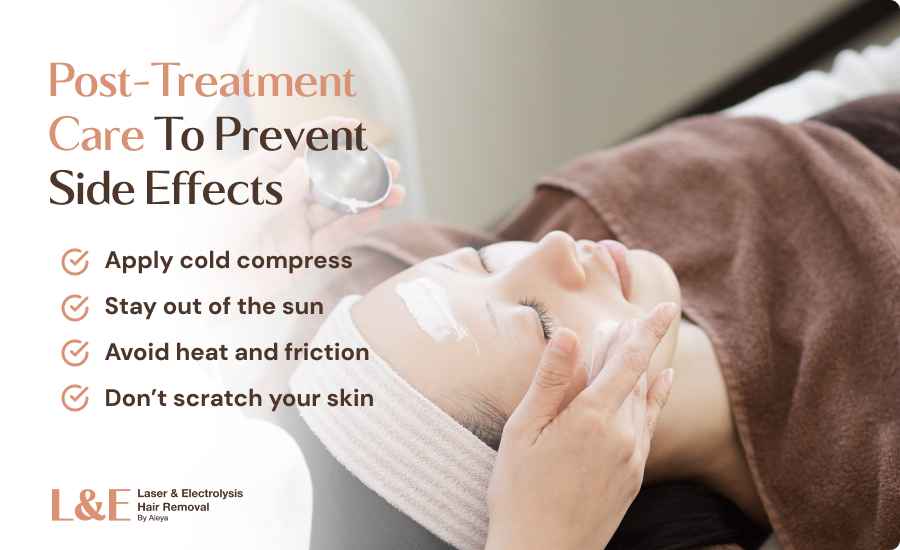
Smooth, Confident Skin Starts at Laser by Aleya
Looking for a lasting way to reduce unwanted hair? Laser hair removal is a safe and effective option, and no, it doesn’t cause cancer.
At Laser by Aleya, your safety and results come first.
Each treatment is tailored to your specific skin tone, hair type, and goals, whether you’re treating a small, sensitive area or a larger zone like the legs or back.
With expert care and personalized service, we make every session as comfortable, efficient, and effective as possible.


